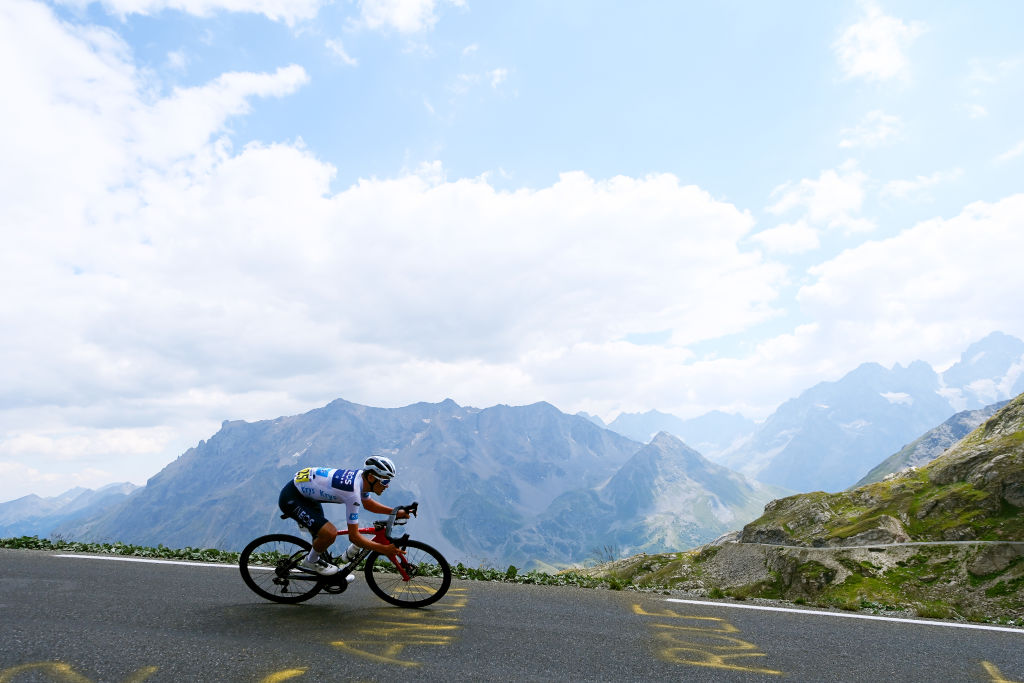
The UCI and the key stakeholders in professional cycling have announced a new safety initiative called SafeR - SafeRoadcycling, aimed at improving safety in men’s and women’s races.
The sport has struggled to respond to a growing number of crashes and race incidents in recent years, with the riders, teams, UCI and race organisers often blaming each other and passing the buck. Sadly the recent tragic death of Gino Mäder at the Tour de Suisse has heightened the need for improved safety.
The need for a more united attitude to race safety first emerged after Fabio Jakobsen’s high-speed crash at the 2020 Tour de Pologne. The presence of road furniture and modern road design is also a growing challenge for high-speed racing.
SafeR was presented in Bilbao before the start of the Tour de France by UCI President David Lappartient, Tour de France race director Christian Prudhomme, who is also president of the race organisers AIOCC association, and Jumbo-Visma team manager Richard Plugge of the AIGCP teams association president.
Adam Hansen, the president of the CPA riders association was also present via video link. He will be on the Tour de France later in the race and confirmed that safety is now riders’ biggest concern.
"Despite the measures put in place since the tightening of the UCI's safety rules in 2021, we have to acknowledge that the number of incidents and injuries continue to rise,” Lappartient admitted.
“The UCI and all the cycling families must unite to reverse this trend and this common desire to find solutions together is embodied in the creation of SafeR.”
The sports stakeholders appear ready to work together for everyone's benefit.
“Today is a proud day because we're here together,” Plugge suggested.
“It took time to decide what to do and understand that our problems don’t just involve riders, teams, races or the UCI individually but that safety is a problem for everyone in cycling. Everyone in the sport has to play a role. We want to keep racing on the road.”
Former world time trial champion Michael Rogers is the UCI Head of Innovation and has been working on the first steps of the SafeR project, along with Jaap Van Hulten, the COO of the Jumbo-Visma team, and other volunteers from the sport’s stakeholders.
Rogers and Van Hulten revealed some details but a timeline suggested that SafeR will only be fully functional in 2025, with the supposedly independent foundation still to be created and funding from riders, teams, and races still to be decided and confirmed.
When Cyclingnews asked one stakeholder why it will take 18 months for SafeR to be functional, they said with a shrug: “Politics.”
Race organisers will still be legally responsible for race safety and the UCI will still create and enforce the regulations and any punishment. However, Rogers and Van Hulten insisted the work of SafeR will be based on facts and data, with the UCI’s Cycling Incidents Database using information from teams, riders, the UCI, incident data, and even social media to identify the root causes of incidents.
Rogers revealed there has been a 24% increase in incidents compared to 2022, with incidents increasing in the final 40km of races. 58% of incidents occur in the final 40km.
SafeR will eventually carry out risk assessments of the routes of UCI WorldTour, UCI Women’s WorldTour, and UCI ProSeries races, providing safety advice to stakeholders and UCI commissaires during races, carrying out safety audits on race organisers and teams, and publishing quarterly safety reports that will be used to improve safety and share information.
New UCI regulations could introduce yellow and red card style punishments for riders who cause incidents, while safety systems and standards could be standardised.
“We proved we’re in the same boat, before that was not the case. We’ve worked together on this,” Prudhomme said.
“We need to work on the races, rider behaviour, and on equipment. The races are becoming faster and faster due to equipment and the roads.”
Prudohmme argued that he and ASO are already working to improve their race safety. He highlighted how 100km of roads have been resurfaced in the Alps for this year’s Tour de France, with 5000 hotspot danger points identified and many given protection during the three-week Tour de France.
More protection will be used on the mountain descents to avoid high-speed crashes.
“We don't own the roads but we'll work together to mitigate the number of crashes. We don’t want to see someone else die at 26 years old,” Prudhomme said, clearly referring to Mäder.
Lappartient only went off script during questions from the media about mountain descents. He made it clear they will remain a part of the sport.
“We’re not going to stop descent like the one into Morzine on July 15 but they’ll be safer,” he said.
“The organisers will help us make the races safer. The climbs need to be safe but we can’t ban descents.”







